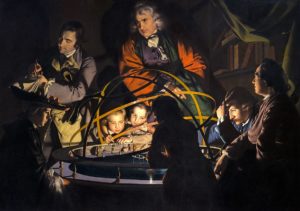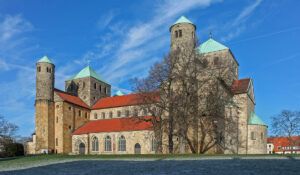 Cities also reorganized themselves. This was always complicated, because rulers tend to prefer cities, and because Roman customs persisted more strongly in urban areas than than in rural areas. Even Roman baths persisted in Europeans cities. We know this because we have records from cities of the 11th century, which include people complaining that the baths are too noisy and disrupt their sleep.
Cities also reorganized themselves. This was always complicated, because rulers tend to prefer cities, and because Roman customs persisted more strongly in urban areas than than in rural areas. Even Roman baths persisted in Europeans cities. We know this because we have records from cities of the 11th century, which include people complaining that the baths are too noisy and disrupt their sleep.
A central feature of urban life during this period was the guild, which seems to have carried over from Roman times. The organizations were formed to preserve the rights and privileges of their members. Partly they were commercial, and partly they were political, interested in creating and enforcing monopolies.
As we mentioned in Lesson 9, building technologies were not forgotten. To illustrate this, here are photos of buildings from the period which still exist. Here is a church in Ravena (Italy) from the 6th century (501-600 AD):

A German church from 1000 AD:

And below is Chartres cathedral in France, built at about 1200 AD:

A New Commercial Foundation
As a practical matter, very little in human life is more important than commerce. All the necessities of daily life – shelter, food, transportation, information – come to us through other people. And those other people need to be compensated – to be paid – for their efforts, or else they’ll stop making those efforts.
And so, a system of paying people is essential to human thriving.
As Rome ceased, the money it had imposed upon Europe ceased with it. (Governments nearly always enforce monopolies on money.) This left the people of Europe in some difficulty.
Within this situation, a number of adaptations arose:
-
- Especially in rural areas, people began bartering rather than using currency.
-
- People continued to use Roman coins, even though the supply of such coins declined.
-
- Monasteries and other groups began minting their own coins, but usually of silver rather than gold, since it was far more available.
-
- People used the coins of distant governments. Since a great deal of long-distance trade continued, these coins became available and were used.
All of these adaptations worked, though they were nothing new. By about 1150 AD, however, something truly new was developing in northern Italy. In the region of Lucca and Florence (Tuscany), people began to create modern commerce. And they did this with a new formulation, composed of descriptions, terms and prices.
By combining precise descriptions, precise terms and definite prices, risk was removed from commercial transactions. Said another way, it extended trust. In fact, the oldest contract we have from Florence (dated the 20th of March, 1128 AD) involved two property developers and a clergyman: people who almost certainly had no long-term relationship.
Another essential part of this arrangement was a surrounding community that would be repulsed by intentional bad dealing. That is, a surrounding society carrying the Christian demand for honesty and fair dealing.
Also essential was the introduction of the florin coin, in silver in 1237 and in gold in 1252. These coins (particularly the gold coin) became the most preferred in Europe. And they were created by Florentine merchants, not by a ruling class.
All of the above, combined, led to the development of a new type of economy, as well as the Italian Renaissance (which we’ll look at in Lesson 11).
It’s also crucial to understand that this new Western economy (which spread rather quickly through Europe) required more of people than slavery did. Capitalism is considerably more difficult for the practitioner than slavery.
Slavery, as we’ve noted, generated wealth more easily than capitalism does. The free-market capitalist, unlike the slave owner, is forever scrambling to find newer and better strategies, and is forever in jeopardy of being overrun by a new player with a better idea. Slave owners faced almost none of that.
The new capitalist formation then, was certainly morally better, but as a practical matter it was harder. But what the moral people rejecting slavery didn’t at first grasp, was that they were creating new and enduring strategies for human thriving.
New commercial strategies worked when they made people’s lives better. Competition in business is really a competition to find the best strategies for human thriving. And those strategies, once discovered, soon spread far and wide. Like technology, they remained, adding one layer upon another.
And so, every time someone improved some process, however small, they made life easier for those who would follow. Over the centuries, this has made a tremendous difference in the way we live. Lifestyle improved for almost everyone, not for just a few.
**
Paul Rosenberg
freemansperspective.com.
